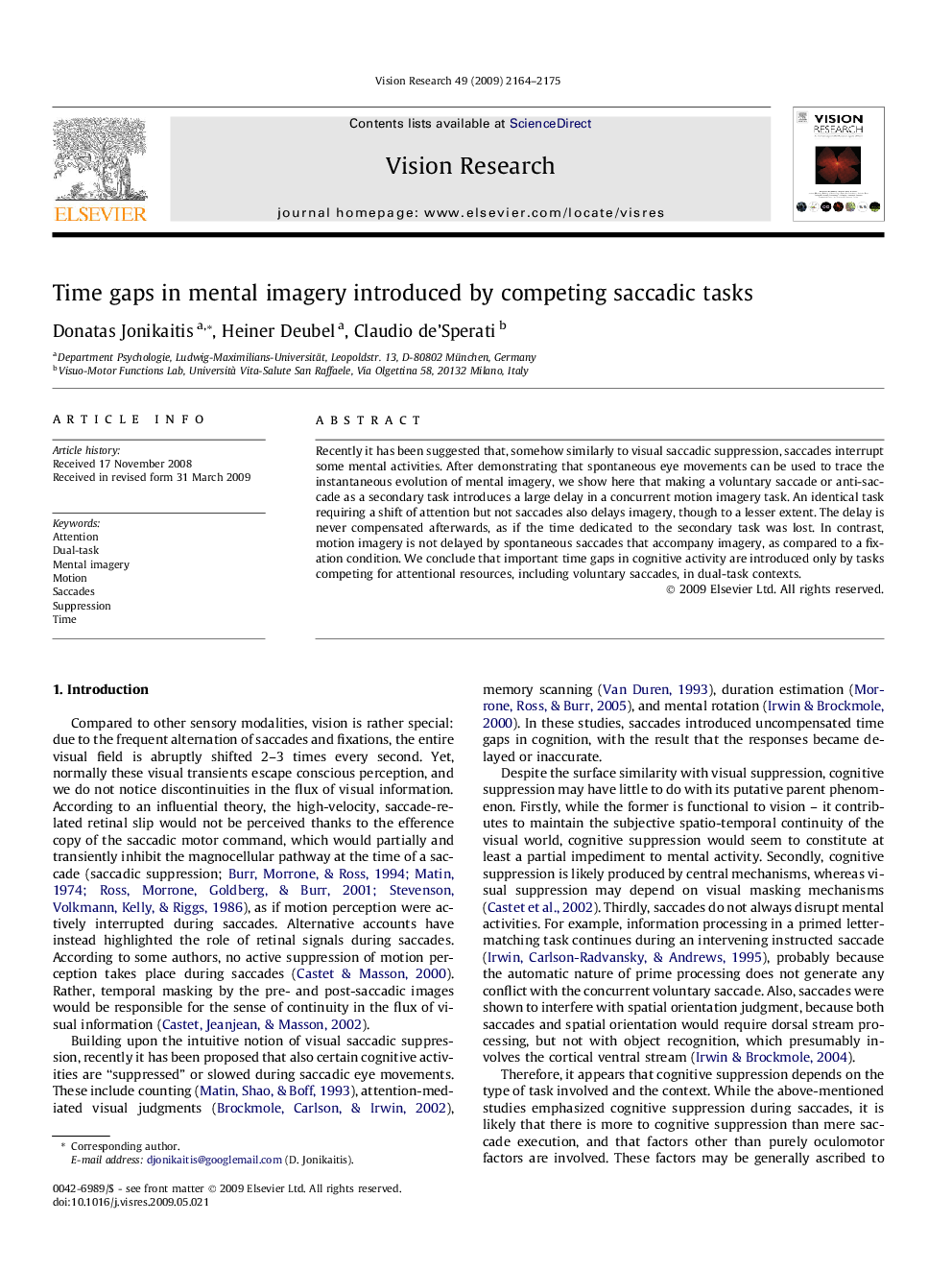| Article ID | Journal | Published Year | Pages | File Type |
|---|---|---|---|---|
| 4035116 | Vision Research | 2009 | 12 Pages |
Recently it has been suggested that, somehow similarly to visual saccadic suppression, saccades interrupt some mental activities. After demonstrating that spontaneous eye movements can be used to trace the instantaneous evolution of mental imagery, we show here that making a voluntary saccade or anti-saccade as a secondary task introduces a large delay in a concurrent motion imagery task. An identical task requiring a shift of attention but not saccades also delays imagery, though to a lesser extent. The delay is never compensated afterwards, as if the time dedicated to the secondary task was lost. In contrast, motion imagery is not delayed by spontaneous saccades that accompany imagery, as compared to a fixation condition. We conclude that important time gaps in cognitive activity are introduced only by tasks competing for attentional resources, including voluntary saccades, in dual-task contexts.
